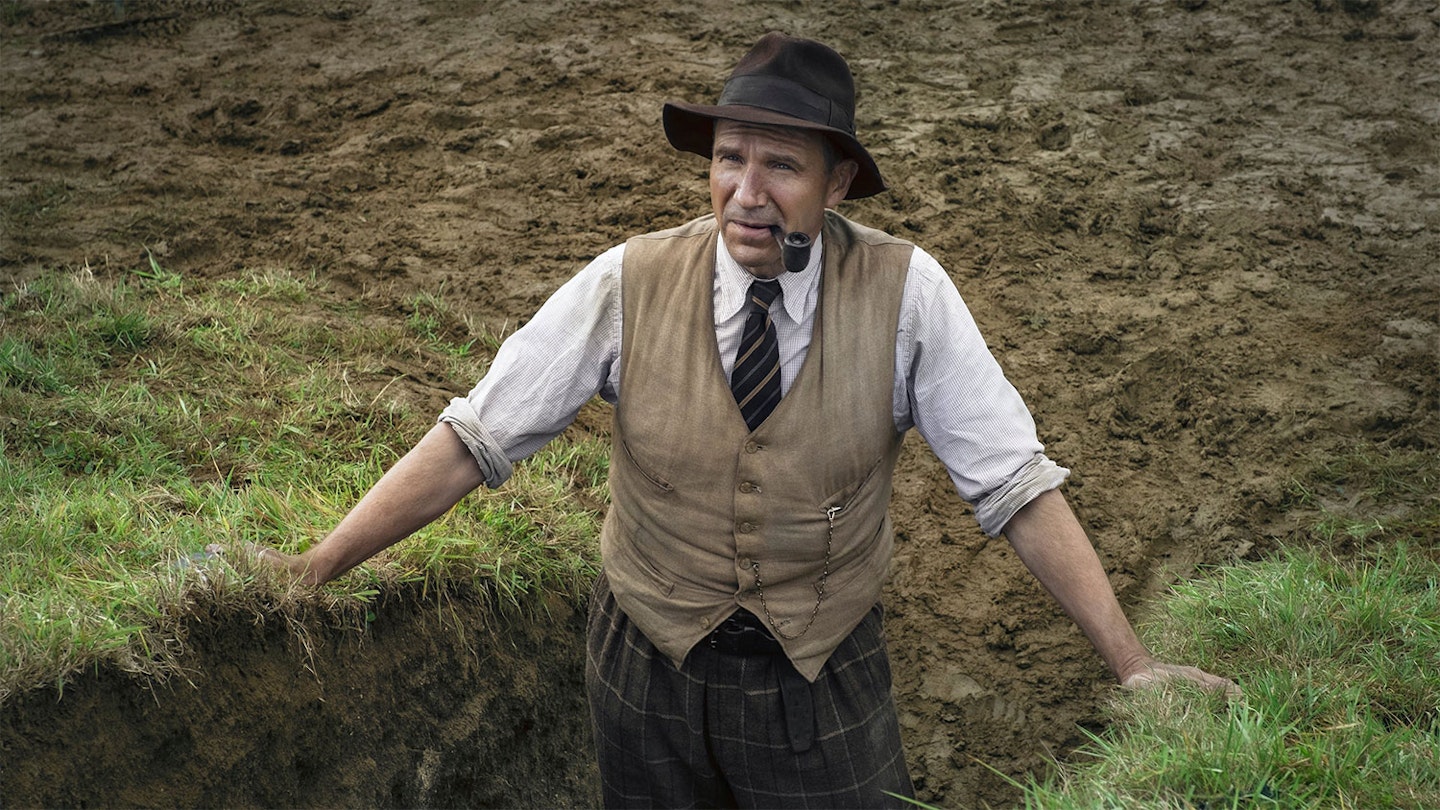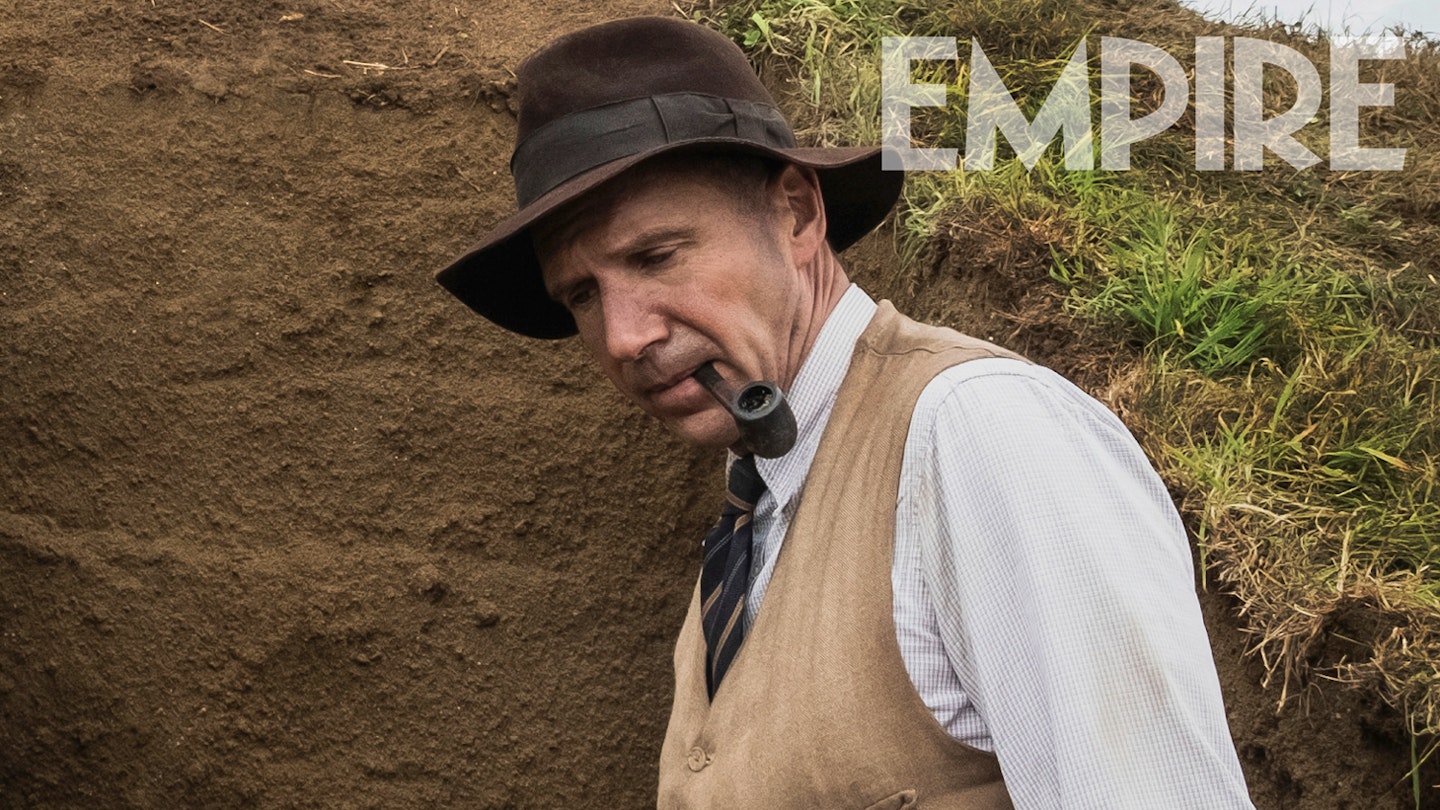If you’ve ever pined for ‘Time Team: The Movie’, The Dig is for you. Adapted from John Preston’s novel, Simon Stone’s film details one of Britain’s most notorious archaeological digs, the discovery in 1938 of an Anglo-Saxon ship in the burial mounds at the delightfully named Sutton Hoo estate in Suffolk. As anyone who’s followed Tony Robinson presiding over a three-day exploration of a Roman villa in the rain might guess, The Dig has to work hard to conjure up genuine dramas out of the minutiae of archaeology (this is no search for the Ark Of The Covenant), never really raising the pulse rate, but it gets by on strong performances, some gorgeous filmmaking and the always winning idea of good people coming together to do good things.
The heart of the film is the relationship between Lady Edith Pretty (Carey Mulligan, in a completely different mode from Promising Young Woman), the widowed landowner who owns the grounds on which the burial mounds are situated, and salt-of-the-earth Basil Brown (Ralph Fiennes), an untrained excavator who she commissions (not without money haggles) to uncover their secrets. There are conflicts — the battle between the amateur Basil and Edith and the British Museum (represented here by Ken Stott) for ownership of the discovery; Edith’s secret illness; an effective set-piece where the site collapses on a key character — but little that truly grips. What is refreshing, however, is Edith and Basil never begin a romantic relationship; instead, it’s a meeting of minds, people who form an intellectual intimacy, and Mulligan and Fiennes play it effortlessly. There’s also an infectious sense of wonder about uncovering history (“The Dark Ages are no longer dark”), rooted in the idea that the past gives hope for the future.
For a film partly about the qualities of Suffolk soil, _The Dig_ could have done with a bite more dirt and grit.
As the story takes place on the precipice of Britain joining World War II, the notion of art surviving for centuries but life itself being very fleeting comes to the fore in The Dig’s less successful B story. After married archaeologists Stuart (Ben Chaplin) and Peggy Piggott (Lily James) join the dig, the latter only hired because her eight-stone frame won’t disrupt the fragile site, Peggy is pulled into the orbit of Edith’s cousin Rory Lomax (Johnny Flynn), waiting for a call-up from the RAF. While Chaplin and James’ characters are drawn as mismatched in painfully obvious ways, the affair itself is a thin romance-with-a-threat-hanging-over-it that feels overly sudsy in places and on the nose thematically in others (“If 1,000 years passed in an instant, what would be left of us?”).
Best known for Billie Piper’s Yerma on stage, sophomore filmmaker Stone, working with DP Mike Eley, creates a beautiful-looking film, full of English pastoral beauty and Malick-y lyricism (count the tracking shots of Mulligan moving through long grass in pleated trousers). But perhaps, for a film partly about the qualities of Suffolk soil, The Dig could have done with a bite more dirt and grit.



